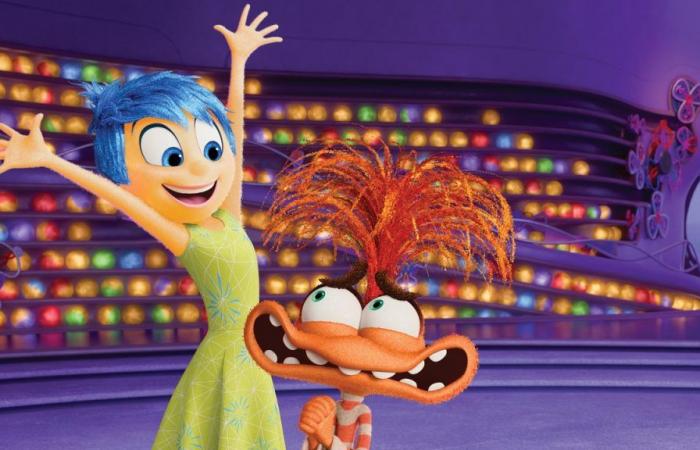It’s been almost a decade since the premiere of Inside Out by Pixar, an intelligent journey into the mind of a little girl. But it’s only been about two years since filming began on Inside Out 2 (in theaters from June 19). The little girl in question, Riley, is now 13 years old and is about to enter the sacred and delicate universe ofadolescence. Her primary emotions – anthropomorphized as Joy, Sadness, Anger, Fear etc. – they inevitably find themselves confronting and negotiating with the various events of life, until the sudden arrival of more complex and mature feelings such as Anxiety And Envy. All the emotions that accompanied childhood are soon put aside, replaced by those that are mainly conditioned by external perception and Riley begins to lose herself trying to connect with other people.
It could be a fair representation of what it means to become a teenager. But the witty operation of the first Inside Out, which manages well to make the ineffable consciousness explicit, is put to the test in the sequel. Further developing a bold idea, the directors Kelsey Mann and the screenwriters Meg LeFauve And Dave Holstein they create more and more opportunities for the film to collapse. In the end everything remains standing, but the metaphors always reach the breaking point.
It is logical, in these times in which more attention is rightly given to mental health, that Anxiety (voiced with determination, in the original, by Maya Hawke) has a central role. Anxiety is one of the great contemporary themes, today when many are looking within to find an explanation for the stress and discomfort of our existence. The conclusions the film reaches about the underlying causes of this situation and how it should be handled, however, are ultimately simplistic: anxiety comes finally (warning, spoilers?) ousted from her place of power, but is allowed to remain as a necessary part of the human equation, recognized but relegated to the background. Inside Out 2in a certain sense, invites viewers to try to do the same, as if real anxiety could be so easily tamed and could be erased in this way.
It is admirable that, among Inside Out 2 And Red, Pixar is targeting a slightly older audience than many of its past films. But Inside Out 2how long moving And livelyapproaches the banality more than its Pixar brethren. Perhaps it would be better not to address the intricate range of thoughts and impulses that govern Riley’s adolescence (and not only) with the language of the animated film. In an effort to comfort and relate to its viewers, the film ends up simplify (and commodify) everything unease and the turmoil they might experience. Directors seem to know their limitations in some areas: Another important part of puberty – the discovery of sexuality – is addressed only in passing. Instead, they dive headlong into diagnoses and prescriptions for many other things.
When Anxiety, with altruistic intentions, relegates primary emotions to the recesses of Riley’s mind, it makes no sense that he would also send us Sadness. The latter, even in its most rudimentary version depicted in the film, is a huge part ofadolescent experience, a bedmate terribly close to anxiety. Here the film chooses plot rather than metaphor, throwing out Sadness (an old character), so that Ennui (a new character, amusingly voiced by the French arthouse star Adèle Exarchopolous) take his place. Of course, teenagers are quite familiar with the haughty boredom embodied by Ennui, but reducing adolescent laziness and disinterest to this is evasive at best.
The same could actually be said of all the others discarded emotions. Why is Anger abandoned, Disgust put aside? Why is Fear so different from Anxiety? Perhaps this is a nit-picky criticism, but if you allow yourself to Inside Out 2 – actually, Disney – a lot admiration for his courage, it can be argued that he could have at least stopped to think if he wasn’t spoiling a great idea. I have no doubt that many children around the world will see the film and find something valuable and useful in it, but Inside Out 2 it’s not the holistic balm that it aims to be. However, there is something Freddo And robotic in the way he isolates emotions, in the way he almost seems to want to make moral judgments about them. Anxiety it actually is the antagonist of many. But it’s hard to see it as a bad which only needs to be calmed by happier feelings. Proceeding like this, strangely, puts you on the side of the bad guy, proposing a philosophy opposite to the warm and welcoming one of this type of film.





